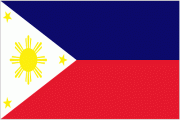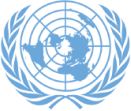Mr. President,
I thank Uruguay for convening this Arria-formula meeting on this important subject.
I also thank the briefers for their insightful presentations.
In the Philippines' experience, implementing the Security Council resolutions on
Women, Peace and Security and UN CEDAW provisions, including General
Recommendation 30, are mutually reinforcing. Indeed, synergies and complementarities
should be strengthened in an efficient way, without creating unnecessary duplication,
particularly in reporting mechanisms.
The Philippines was the first country in the Asia-Pacific region to produce a
National Action Plan, or NAP, on Women, Peace and Security, which was launched in
2009. That same year, the Philippines also enacted Republic Act 9710, also known as
the Magna Carta of Women, which paved the way for Government to launch its gender
mainstreaming strategy across all government agencies. The Magna Carta translates
and integrates the provisions of the UN CEDAW and effectively institutionalized the NAP
into existing Philippine laws and national work plans.
Since 2009, a number of initiatives have been launched to implement the NAP and
the Magna Carta, in alignment with the provisions of the CEDAW. Among the most
important are:
First, the provision of a Gender and Development, or GAD, budget, which provides
funds for the national and local government agencies to implement gender mainstreaming
programs.
Second, the launch in 2013 of the Women's Empowerment, Development and
Gender Equality Plan, or Women's EDGE, which sought to address the vulnerability of
women and girls to gender-based violence in conflict-affected areas.
Third, the creation by the Philippine Department of Social Welfare and
Development of Women Friendly Spaces intended to provide safe and private evacuation
spaces for women and girls in disaster-affected areas; and skills training and cash-forwork
programs to address livelihood needs of women in conflict-affected areas. These
arrangements have encouraged women volunteers to become gender and peace
advocates with the tools to access local protective mechanisms such as the Violence
Against Women, or VAW, desks, and the committees against trafficking. Currently, there
are 10 such sites, all located in conflict-affected areas in Mindanao.
Fourth, the institution in the Philippine Armed Forces of a stand-alone office that
handles gender-related concerns.
Finally, under the Philippines' agenda of "Building a Culture of Peace and Conflict
Sensitivity" the formulation of the Government's Peace and Development Roadmap in
the conflict-affected areas will ensure inclusive participation by instituting a Women Peace
Table so that women could directly contribute and participate in the peace process. The
Peace Agreement with the Bangsamoro signed in March 2014 was the first of its kind in
the world to be signed by a woman as Chief Negotiator with the strong participation of
women in the normalization process as chairs of 3 of the 4 peace. Committees.
Similar national programs should be welcomed and the Philippines strongly
supports global efforts in advancing gender empowerment under relevant UNSC
resolutions and in UN CEDAW.
I thank you, Mr. President.


